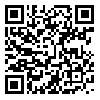BibTeX | RIS | EndNote | Medlars | ProCite | Reference Manager | RefWorks
Send citation to:
URL: http://tkj.ssu.ac.ir/article-1-787-en.html

 , Ali Reza Fallahmadvari
, Ali Reza Fallahmadvari 
 , Fereidoun Laal
, Fereidoun Laal 
 , Vali Saresangi
, Vali Saresangi 
 , Rouhollah Fallahmadvari *
, Rouhollah Fallahmadvari * 

Introduction: Occupational hearing loss due to noise is completely preventable and using the hearing protection device is one of control proceedings by the workers expose the impermissible noise. Therefore, this study aimed to determine the effective factors on occupational hearing loss and also the effective factors on using hearing protective devices by the workers exposed to excessive noise.
Method: In this cross-sectional analytical study, 100 workers exposed to excessive noise were selected through sampling method. Data collection tools were a demographic information questionnaire and BASNEF model constructs, which its validity and reliability were confirmed. Audiometry was performed and recorded for each employee. Data were analyzed by SPSS software, version 19.
Results: The findings showed that the age and occupational history had a meaningful relationship to hearing threshold shift (p-value<0.05). There is no meaningful relation between martial statue and education level (p-value>0.05). Also, there was a meaningful relationship between education and duration of using the hearing protection device (p-value<0.05). There was no significat relationship between duration of using the hearing protection device with marital status, education level, job tenure and age (p-value>0.05).
Conclusion: The results show that there is a relation between the training of BASNEF model and duration of using the hearing protection device; so this training should be considered in hearing protective programs.
Received: 2016/07/31 | Accepted: 2016/10/4 | Published: 2017/05/7
| Rights and permissions | |
 |
This work is licensed under a Creative Commons Attribution-NonCommercial 4.0 International License. |



